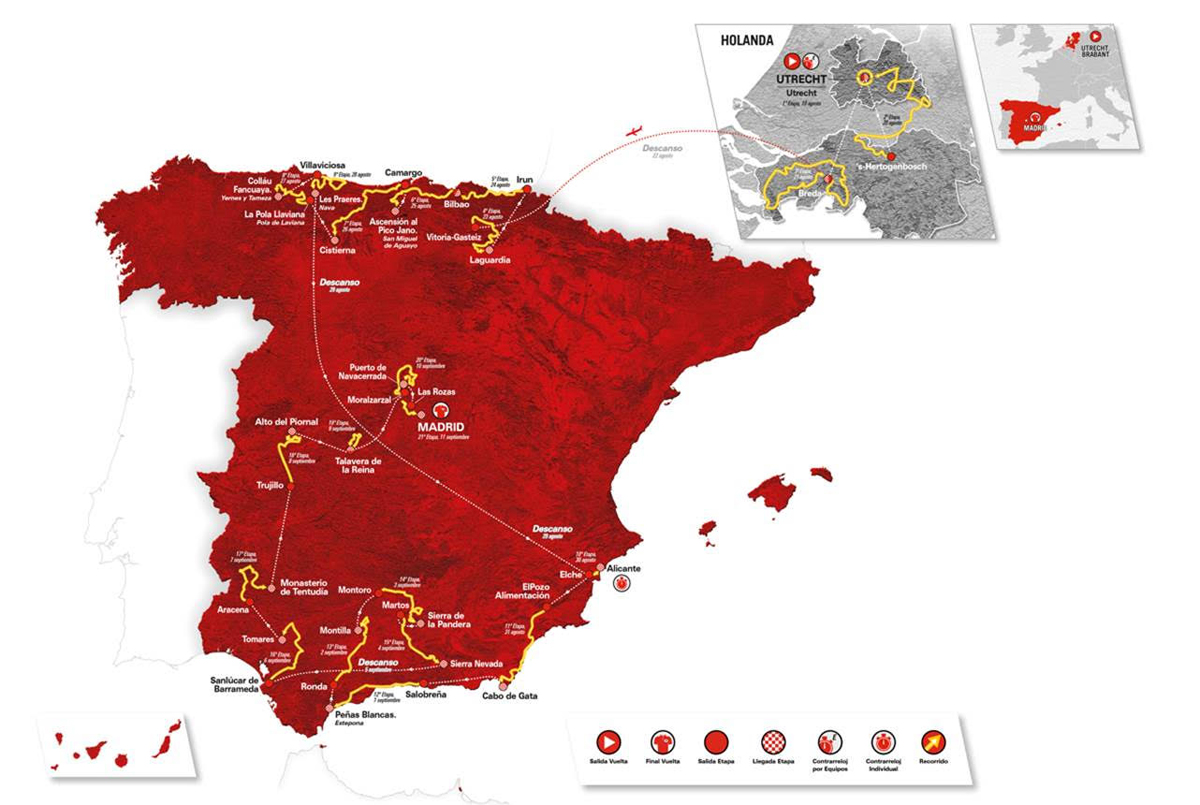Vuelta a España's highest-ever Grand Tour summit finish in doubt
Regional government to decide whether high-altitude finish line at Pico Veleta can go ahead

Hopes that the Vuelta a España will host the highest-ever Grand Tour summit finish in cycling history this September in the Sierra Nevada are reportedly now hingeing on a regional government decision over whether the race can enter a national park.
According to local newspaper IDEAL, race organisers Unipublic want to conclude stage 15 of the 2022 Vuelta a España on September 4th near the Pico Veleta weather station at 2,805 metres above sea level.
That’s 300 metres higher than the finish that was published on the race website which is at 2,504 metres and situated near a university youth hostel. That lower location is where Miguel Angel Lopez won the last time the Vuelta visited Sierra Nevada in 2017, and some 500 metres lower than the actual summit of the Veleta. The Veleta is the second-highest climb in the 150-kilometre Sierra Nevada mountain range and is one of its most emblematic peaks.
The new finish, if agreed upon, would be the highest ever reached by any Grand Tour, albeit by a three-metre margin. The Bonette-Restefond, the highest pass in the Tour de France, is a fraction lower at 2,802 metres above sea level while in the Giro d'Italia the Stelvio, also used as a summit finish back in 2012, peaks out at 2,758 metres. More important than the bragging rights between organisers, the notable increase in altitude gain and estimated additional three kilometres of steady climbing at an average of around 7% would also render the toughest stage of the 2022 Vuelta considerably tougher.
However, the extended Vuelta stage reportedly conflicts directly with a prohibition on sporting events within Sierra Nevada National Park, the only exceptions to that ban being races that were already using the park before its official inauguration in 1989. The Vuelta first visited the Sierra Nevada in 1979 and has reportedly never been on the permitted list, apparently because it does not go into the Sierra Nevada each year.
However, the newly proposed finish has kicked off a fresh debate on the wisdom of the Vuelta using the park again, even if according to IDEAL, it appeared that the regional government was likely to give the organization the green light to extend the race higher than ever in the national park.
A definitive decision is expected next month after the Sierra Nevada commission, which oversees the park, has met and produced a report. However, the commission is said to be split down the middle about giving the green light to the Vuelta’s new finish. And a study produced by 45 different scientists as well as the government scientific research body CSIC has described the new Vuelta finish in Sierra Nevada as a “serious risk for these summits which are considered to be a focal point of world biodiversity, and which goes against the efforts to conserve the area both by the [regional] administration and Andalusian society in general.”
Get The Leadout Newsletter
The latest race content, interviews, features, reviews and expert buying guides, direct to your inbox!
Ecological collectives, as well as mountaineers associations and sports federations also oppose the idea, IDEAL says.
However, the director of the park, Francisco de Assis Munoz, has insisted that the race should go ahead. He claimed to IDEAL that the divisive issue boiled down to a section of mountain road just a kilometre long where motor vehicles are prohibited, but which an estimated 20,000 cyclists use each year.
Plans are apparently afoot for just four of the 150-strong Vuelta a España race vehicle convoy to be allowed to travel to the new summit finish on race day. Before any of that can happen, the regional government needs to give what would potentially be the highest finish in the history of Grand Tours a thumbs-up or a thumbs down. And that is a decision which won’t be reached before mid-July.
Cyclingnews is the world's leader in English-language coverage of professional cycling. Started in 1995 by University of Newcastle professor Bill Mitchell, the site was one of the first to provide breaking news and results over the internet in English. The site was purchased by Knapp Communications in 1999, and owner Gerard Knapp built it into the definitive voice of pro cycling. Since then, major publishing house Future PLC has owned the site and expanded it to include top features, news, results, photos and tech reporting. The site continues to be the most comprehensive and authoritative English voice in professional cycling.